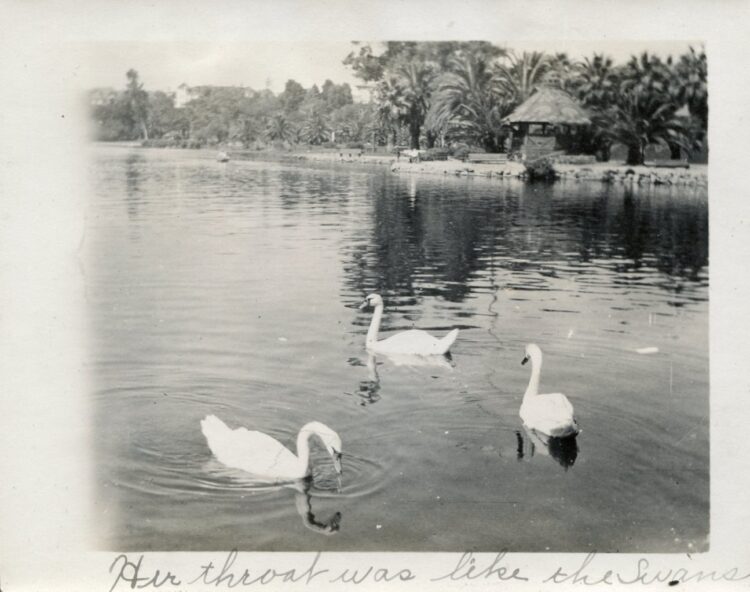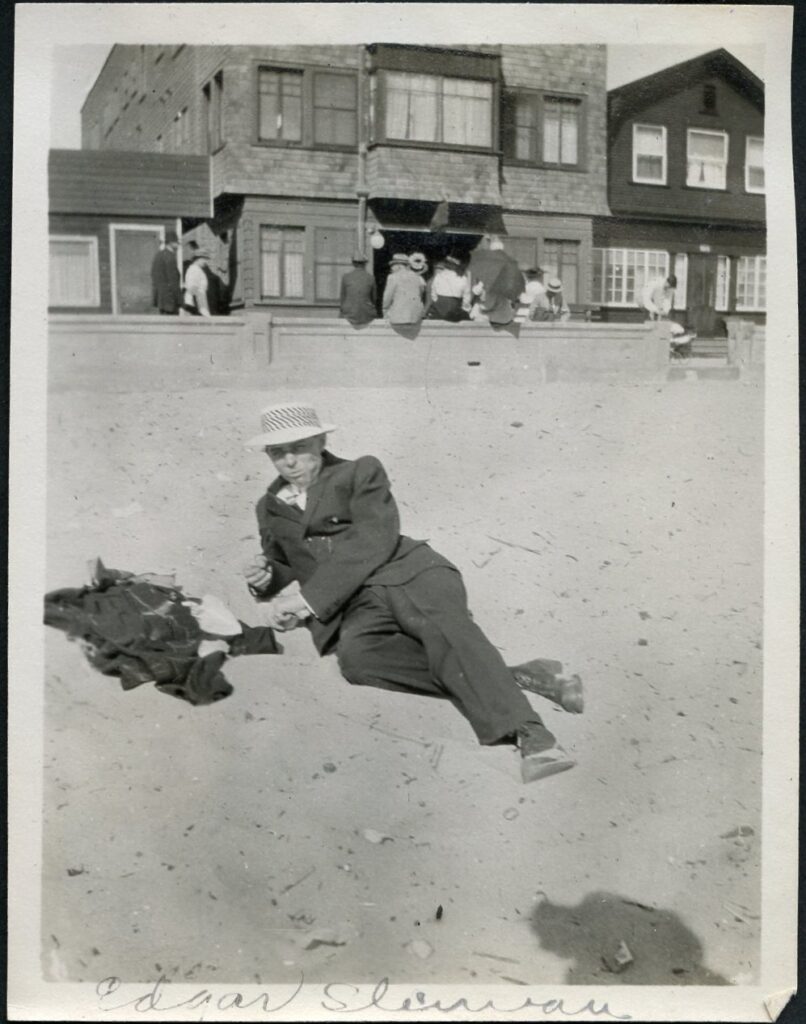Information is valuable. In museums and archives, the more information included with a donated collection, the better. If we have names, dates, and locations for photos and items, the collection is more useful to us and to researchers.
Much of my work in the archives of the Bisbee Mining & Historical Museum involves scanning photos and documents to add to the museum’s database. Each scanned image requires “metadata,” or data about data. For example, metadata for a photo entry in the database could include: year taken, name of photographer, description of the photo, who donated the photo to the museum, and more. The most intriguing pieces of metadata are notes written on the photo itself. One of my particular favorites I’ve found here at the museum is this image and handwriting:

Written under a photo of a lovely scene of a lake, most likely MacArthur Park in Los Angeles, circa 1915, is “Her throat was like the Swans.” Unfortunately, we do not have much metadata about this photo. We do not know who took the photo, who wrote this phrase, or whom they were writing about. I would love to know more context for this image, but alas, the details are lost to time because the owner did not include metadata.
Here are some tips on how to make your personal photo collection more meaningful for future generations or a future museum donation.
1. Add information in pencil to the back or edges of photos. Include dates, names, locations, and other notes to provide further context.
2. For a larger collection, write out an explanation of the contents and include it with your photo storage. Include all of the historical information you have on the people and places in the photos, such as relationships and ages.
3. Write as legibly as possible. Below is an example of illegibility. While the first name of the man pictured is clear, Edgar, the last name is open to interpretation.


4. For long-term storage, consider investing in acid-free photo boxes and acid-free tissue paper to divide and protect photos. Regular cardboard boxes can degrade photos.
5. Expert-level: Scan your photos and create backups.
Implementing these tips will preserve valuable information about your collection, ensuring future family members have context for their treasured family history. And who knows? Maybe an archivist in 100 years will process your collection and be grateful for all of the information you provided.